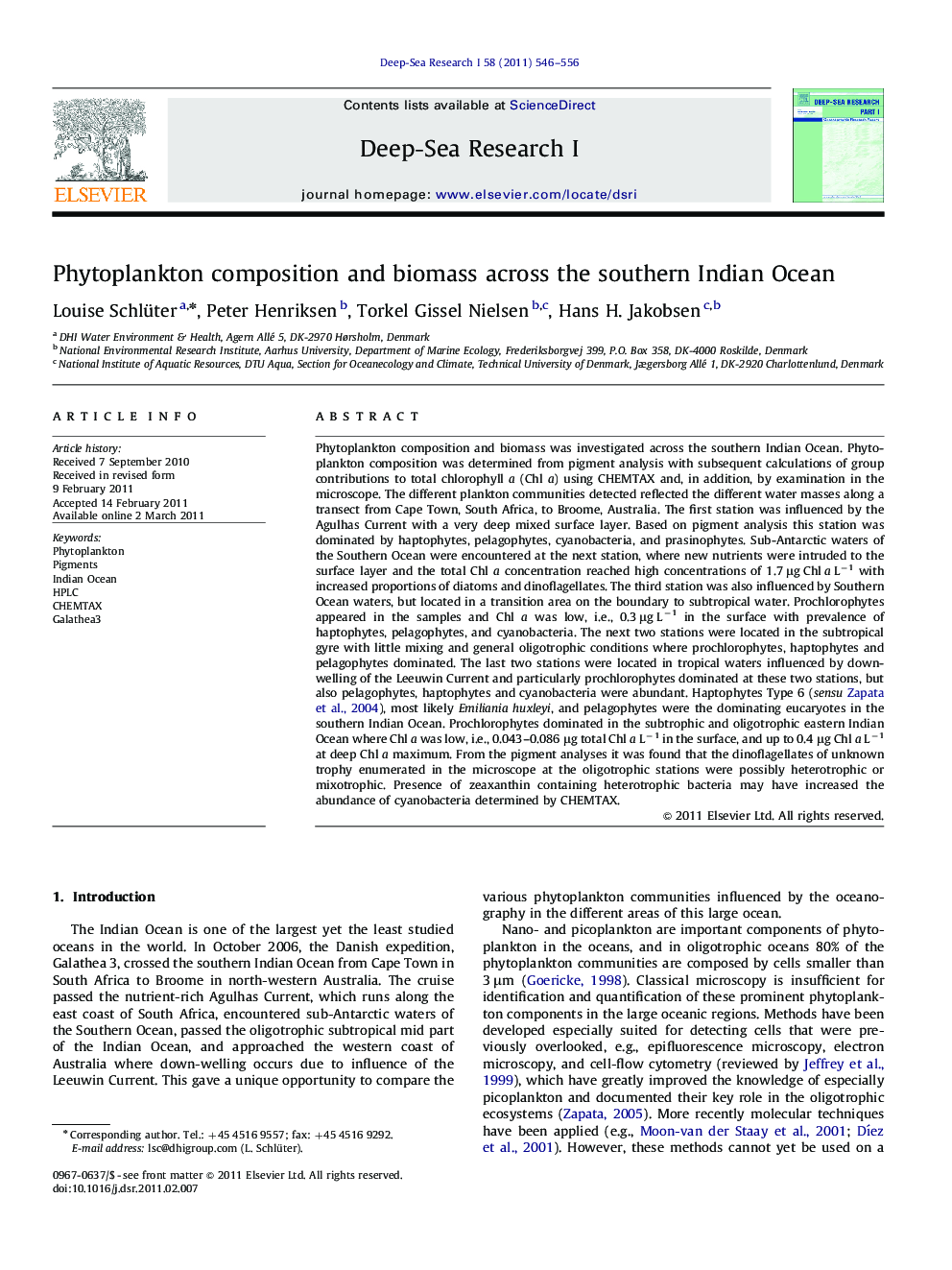| کد مقاله | کد نشریه | سال انتشار | مقاله انگلیسی | نسخه تمام متن |
|---|---|---|---|---|
| 4534817 | 1326062 | 2011 | 11 صفحه PDF | دانلود رایگان |

Phytoplankton composition and biomass was investigated across the southern Indian Ocean. Phytoplankton composition was determined from pigment analysis with subsequent calculations of group contributions to total chlorophyll a (Chl a) using CHEMTAX and, in addition, by examination in the microscope. The different plankton communities detected reflected the different water masses along a transect from Cape Town, South Africa, to Broome, Australia. The first station was influenced by the Agulhas Current with a very deep mixed surface layer. Based on pigment analysis this station was dominated by haptophytes, pelagophytes, cyanobacteria, and prasinophytes. Sub-Antarctic waters of the Southern Ocean were encountered at the next station, where new nutrients were intruded to the surface layer and the total Chl a concentration reached high concentrations of 1.7 μg Chl a L−1 with increased proportions of diatoms and dinoflagellates. The third station was also influenced by Southern Ocean waters, but located in a transition area on the boundary to subtropical water. Prochlorophytes appeared in the samples and Chl a was low, i.e., 0.3 μg L−1 in the surface with prevalence of haptophytes, pelagophytes, and cyanobacteria. The next two stations were located in the subtropical gyre with little mixing and general oligotrophic conditions where prochlorophytes, haptophytes and pelagophytes dominated. The last two stations were located in tropical waters influenced by down-welling of the Leeuwin Current and particularly prochlorophytes dominated at these two stations, but also pelagophytes, haptophytes and cyanobacteria were abundant. Haptophytes Type 6 (sensu Zapata et al., 2004), most likely Emiliania huxleyi, and pelagophytes were the dominating eucaryotes in the southern Indian Ocean. Prochlorophytes dominated in the subtrophic and oligotrophic eastern Indian Ocean where Chl a was low, i.e., 0.043–0.086 μg total Chl a L−1 in the surface, and up to 0.4 μg Chl a L−1 at deep Chl a maximum. From the pigment analyses it was found that the dinoflagellates of unknown trophy enumerated in the microscope at the oligotrophic stations were possibly heterotrophic or mixotrophic. Presence of zeaxanthin containing heterotrophic bacteria may have increased the abundance of cyanobacteria determined by CHEMTAX.
► Phytoplankton composition and biomass was investigated in the southern Indian Ocean.
► The plankton communities detected reflected the different water masses encountered.
► Haptophytes and pelagophytes were the dominating eucaryotes in the Indian Ocean.
► Prochlorophytes dominated in the subtrophic and oligotrophic eastern Indian Ocean.
► Zeaxanthin was found to be a pigment of heterotrophic bacteria.
Journal: Deep Sea Research Part I: Oceanographic Research Papers - Volume 58, Issue 5, May 2011, Pages 546–556